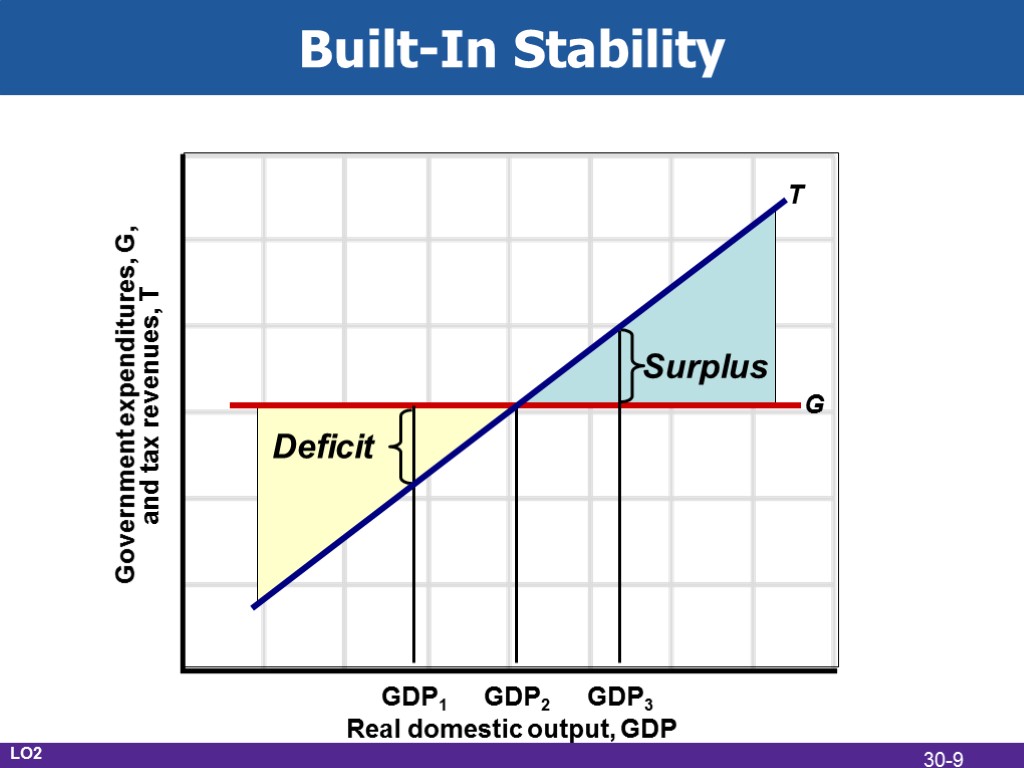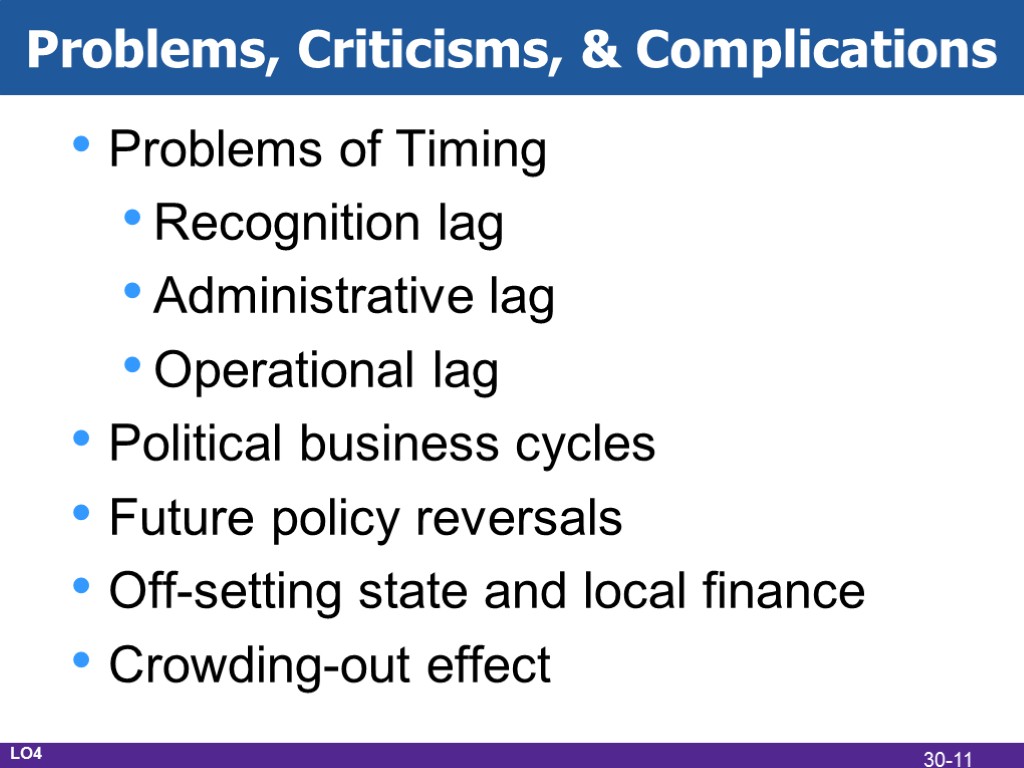Fiscal Policy, Deficits, and Debt 30 Mc. Graw-Hill/Irwin


Fiscal Policy, Deficits, and Debt 30 McGraw-Hill/Irwin Copyright © 2012 by The McGraw-Hill Companies, Inc. All rights reserved.

Fiscal Policy Deliberate changes in: Government spending Taxes Designed to: Achieve full-employment Control inflation Encourage economic growth LO1 30-2

Expansionary Fiscal Policy Use during a recession Increase government spending Decrease taxes Combination of both Create a deficit LO1 30-3

Expansionary Fiscal Policy Real GDP (billions) Price level AD2 AD1 $5 billion increase in spending Full $20 billion increase in aggregate demand AS $490 $510 P1 LO1 Recessions Decrease AD 30-4

Contractionary Fiscal Policy Use during demand-pull inflation Decrease government spending Increase taxes Combination of both Create a surplus LO1 30-5

Contractionary Fiscal Policy Real GDP (billions) Price level AD3 AD4 $3 billion initial decrease in spending Full $12 billion decrease in aggregate demand AS $502 $522 P2 AD5 $510 d b a P1 c LO1 30-6

Policy Options: G or T? To expand the size of government If recession, then increase government spending If inflation, then increase taxes To reduce the size of government If recession, then decrease taxes If inflation, then decrease government spending LO1 30-7

Built-In Stability Automatic stabilizers Taxes vary directly with GDP Transfers vary inversely with GDP Reduces severity of business fluctuations Tax progressivity Progressive tax system Proportional tax system Regressive tax system LO2 30-8

Built-In Stability G T Deficit Surplus GDP1 GDP2 GDP3 Real domestic output, GDP Government expenditures, G, and tax revenues, T LO2 30-9

Fiscal Policy: The Great Recession Financial market problems began in 2007 Credit market freeze Pessimism spreads to the overall economy Recession officially began December 2007 and lasted 18 months LO4 30-10

Problems, Criticisms, & Complications Problems of Timing Recognition lag Administrative lag Operational lag Political business cycles Future policy reversals Off-setting state and local finance Crowding-out effect LO4 30-11

Current Thinking on Fiscal Policy Let the Federal Reserve handle short-term fluctuations Fiscal policy should be evaluated in terms of long-term effects Use tax cuts to enhance work effort, investment, and innovation Use government spending on public capital projects LO4 30-12

The U.S. Public Debt $11.9 trillion in 2009 The accumulation of years of federal deficits and surpluses Owed to the holders of U.S. securities Treasury bills Treasury notes Treasury bonds U.S. savings bonds LO4 30-13

The U.S. Public Debt LO4 Debt held outside the Federal government and the Federal Reserve: 57% Debt held by the Federal government and the Federal Reserve: 43% 30-14

Global Perspective Public Sector Debt as Percentage of GDP, 2009 Italy Japan Greece Belgium France United States France Germany United Kingdom Spain Netherlands Canada 0 20 40 60 80 100 Source: Organization for Economic Cooperation and Development, OECD LO4 30-15

The U.S. Public Debt Interest charges on debt Largest burden of the debt 1.3% of GDP in 2009 False Concerns Bankruptcy Refinancing Taxation Burdening future generations LO4 30-16

Substantive Issues Income distribution Incentives Foreign-owned public debt Crowding-out effect revisited Future generations Public investment LO4 30-17

Crowding-Out Effect Real interest rate (percent) Investment (billions of dollars) ID1 ID2 a b c Increase in investment demand Crowding-out effect LO4 30-18
fiscal_policy,_deficits,_and_debt.ppt
- Количество слайдов: 18

